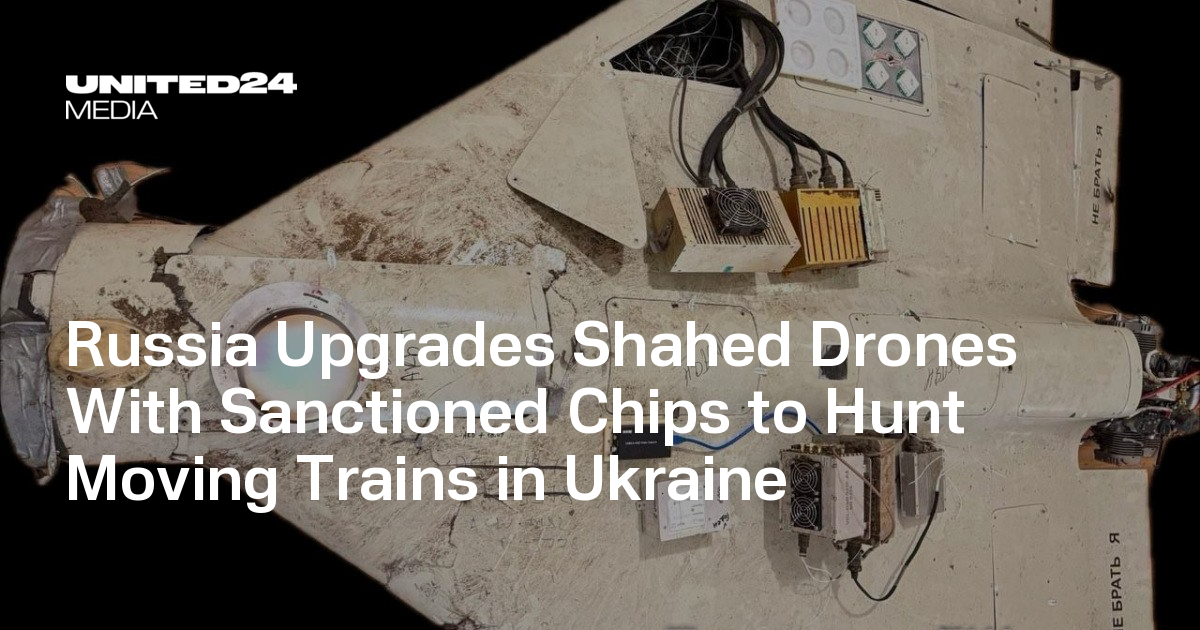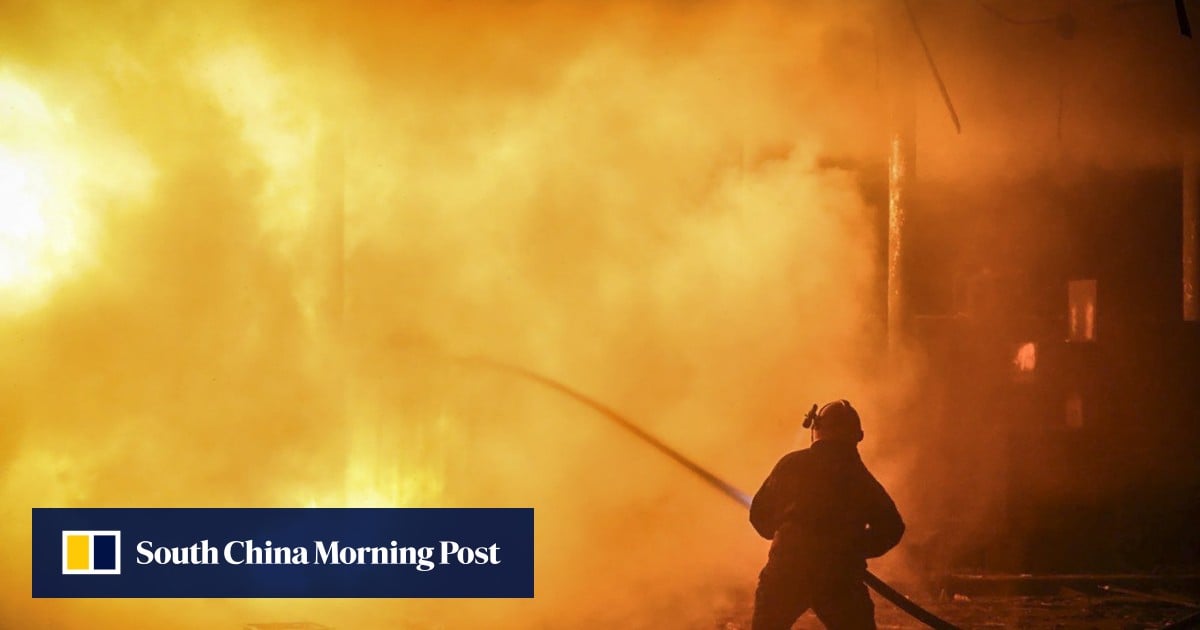Russia is increasingly targeting Ukraine’s rail system with long-range drones, striking trains deep inside the country to disrupt logistics and spread fear, according to the defense media outlet The War Zone on October 1.
The latest attack occurred near Bobrovytsya in the Chernihiv region, about 100 miles from the Russian border.
‼️ A new modification of the Shahed with a night camera has hit a moving train for the first time in the Chernihiv region.
First, the first drone hit the locomotive, which stopped the entire train, and then the drones began to strike other cars in the train. During the attack,… pic.twitter.com/kNAGIw2eXC — MAKS 25 🇺🇦👀 (@Maks_NAFO_FELLA) October 1, 2025
A Ukrainian train was reportedly hit by a Shahed drone guided by a night-vision camera. While The War Zone noted it cannot independently verify the strike, video from the scene appeared to show drones striking a locomotive before hitting railcars. The exact type of drone remains uncertain.
“The drones hit their targets on the move and evade Ukrainian aircraft covering the train, giving them no chance to shoot them down,” Russian sources claimed.
The latest Russian development involving the Iranian-designed Shahed long-range one-way attack drone reportedly comprises a pan/tilt video camera mounted on the UAV, allowing it to operate in a visual reconnaissance capacity. https://t.co/uKdrnLEIGz pic.twitter.com/6GLr10jDac — Karsten Marrup (@KarstenMarrup) March 13, 2024
In March 2024, it was revealed that Russia had begun installing cameras and cellular modems on some Shahed drones, giving them reconnaissance functions and the ability to transmit imagery via Ukrainian mobile networks.
Standard Shaheds are not designed to hit moving targets, as they lack man-in-the-loop control or autonomous targeting systems. Analysts caution that other possibilities remain—including short-range drones launched by Russian commandos behind Ukrainian lines.
The strike caused no casualties but hit grain cars, cut power to 26,000 residents, and delayed train traffic.
The Bobrovytsya incident is part of a growing Russian campaign against Ukrainian trains. Ukraine’s reliance on railways has intensified since airports were shut down early in the war, making them crucial for both military logistics and international travel.
Oleksandr Pertsovskyi, head of Ukraine’s rail system, told Reuters that Russia has unleashed a “massive wave” of long-range drone attacks since the summer, striking dozens of railway substations. He attributed the surge to a “dramatic increase” in Shahed production, with Russia’s defense industry now estimated to produce up to 5,000 drones per month.
“Previously, they simply did not have sufficient resources for a single combat drone, such as a Shahed, to hunt down a locomotive,” Pertsovskyi said. “Now they can afford to use Shaheds to hit individual locomotives rather than strategic targets.”
Ukrainian officials say the damage is limited and repairs are made quickly. Still, Territorial Development Minister Oleksiy Kuleba stressed that the attacks are aimed squarely at Ukraine’s civilian and economic lifelines.
“The goal of such attacks is clear—to complicate passenger and cargo transportation, disrupt stable transport operations, and put additional pressure on people and the economy,” Kuleba said.
The latest wave of railway strikes underscores Russia’s broader escalation in drone and missile use against Ukraine.
Earlier, a modified Iranian-made Shahed-136 suicide drone, featuring an onboard camera, a direct radio control system from Russia, and an artificial vision module, was discovered in Ukraine for the first time.
[SRC] https://united24media.com/latest-news/russia-upgrades-shahed-drones-with-sanctioned-chips-to-hunt-moving-trains-in-ukraine-12136
 Visit the website
Visit the website






